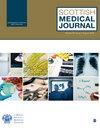建构主义的神经解剖学实验教学方法:学生对积极学习环境的认知
IF 1.4
4区 医学
Q2 MEDICINE, GENERAL & INTERNAL
引用次数: 3
摘要
医学教育最近的一个趋势是开发一个更有活力和更综合的课程。团队学习(TBL)提高了学生的参与度和解剖学知识的主动建构。本初步研究旨在实证观察医学生使用互动白板作为教学策略,对其学习成果的成就、神经解剖学知识的建构、批判性思维和问题解决的看法。方法通过独立的神经解剖学实验室调查,采用李克特5分制问卷,收集学生对IWB学习经验的看法和评价。结果学生认为使用IWB促进了他们的学习体验。94.2%的学生认为新技术帮助他们取得了学习成果,帮助他们整合了基础科学和临床科学/技能知识(90.4%),提高了他们解决问题的能力(92.3%),促进了他们与神经解剖学教师的互动(96.2%),提高了他们的批判性思维(88.4%)。结论收集这些关于学生认知和学习环境的实证数据,有助于医学院神经科学教师更好地向其他医疗机构的教师概述他们的活动。应用这些方法可以提高学习过程,节省神经解剖学实验的时间,也有助于克服合格的神经解剖学教育工作者短缺的问题。本文章由计算机程序翻译,如有差异,请以英文原文为准。
A constructivist approach to teach neuroanatomy lab: Students’ perceptions of an active learning environment
Background A recent trend in medical education is developing a more dynamic and integrated curriculum. Team-based learning (TBL) increases students’ engagement and the active construction of anatomical knowledge. This initial study aimed to empirically observe medical students’ perceptions of their achievement of learning outcomes and the construction of their neuroanatomy knowledge, critical thinking, and problem-solving using an interactive whiteboard (IWB) as a teaching strategy. Methods An independent neuroanatomy lab survey collected students’ perceptions and comments about their learning experiences using the IWB on a questionnaire using a 5-point Likert scale. Results Student participants felt that using the IWB has facilitated their learning experience. 94.2% of student participants endorsed feelings that new technology has helped them achieve their learning outcomes, helped them integrate both their basic science and clinical science/skills knowledge (90.4%), enhanced their problem-solving skills (92.3%), facilitated their interaction with the neuroanatomy faculty (96.2%) and increase their critical thinking (88.4%). Conclusion Collecting such empirical data about students’ perceptions and their learning environment should help neurosciences faculty in medical schools better outline their activities to faculty at other medical institutions. Applying these methods may enhance the learning process, save time during neuroanatomy lab, and it could also help overcome the shortage of qualified neuroanatomy educators.
求助全文
通过发布文献求助,成功后即可免费获取论文全文。
去求助
来源期刊

Scottish Medical Journal
医学-医学:内科
CiteScore
4.80
自引率
3.70%
发文量
42
审稿时长
>12 weeks
期刊介绍:
A unique international information source for the latest news and issues concerning the Scottish medical community. Contributions are drawn from Scotland and its medical institutions, through an array of international authors. In addition to original papers, Scottish Medical Journal publishes commissioned educational review articles, case reports, historical articles, and sponsoring society abstracts.This journal is a member of the Committee on Publications Ethics (COPE).
 求助内容:
求助内容: 应助结果提醒方式:
应助结果提醒方式:


